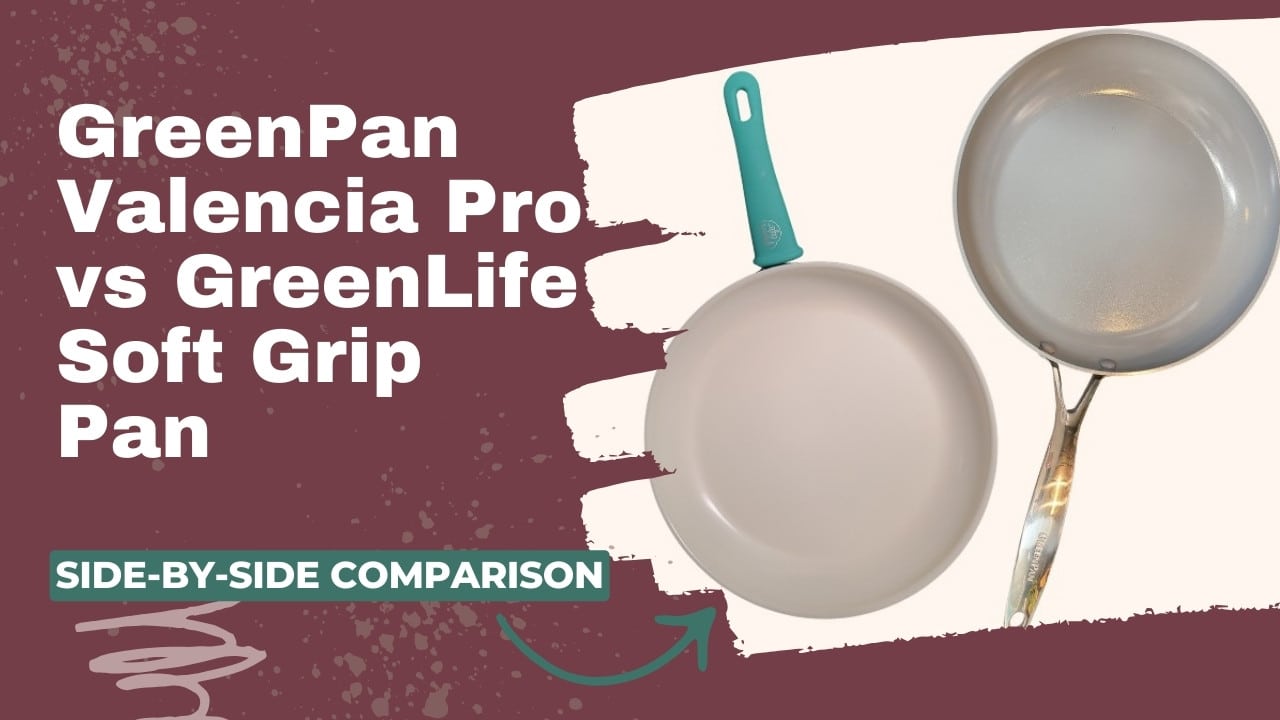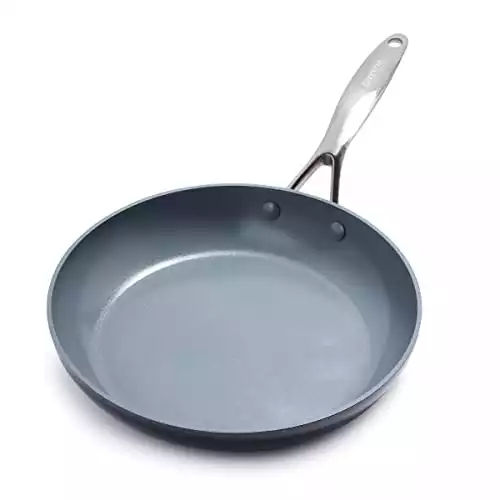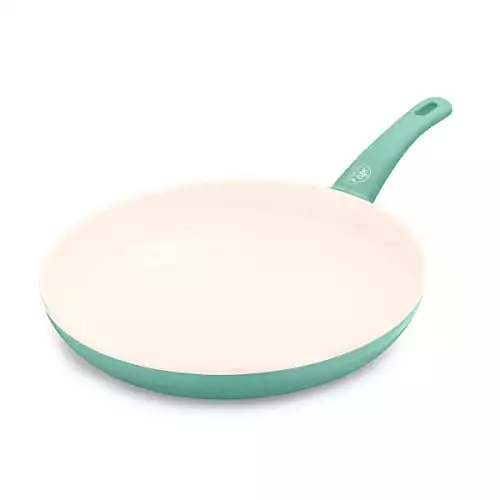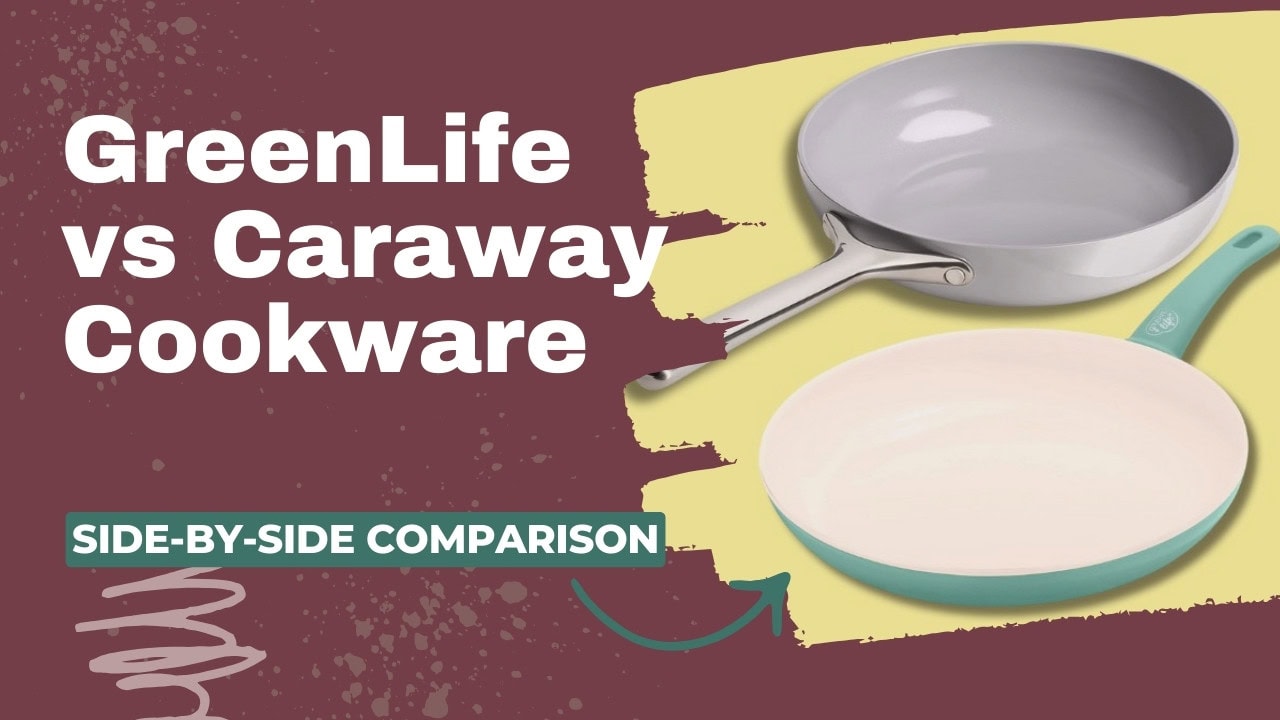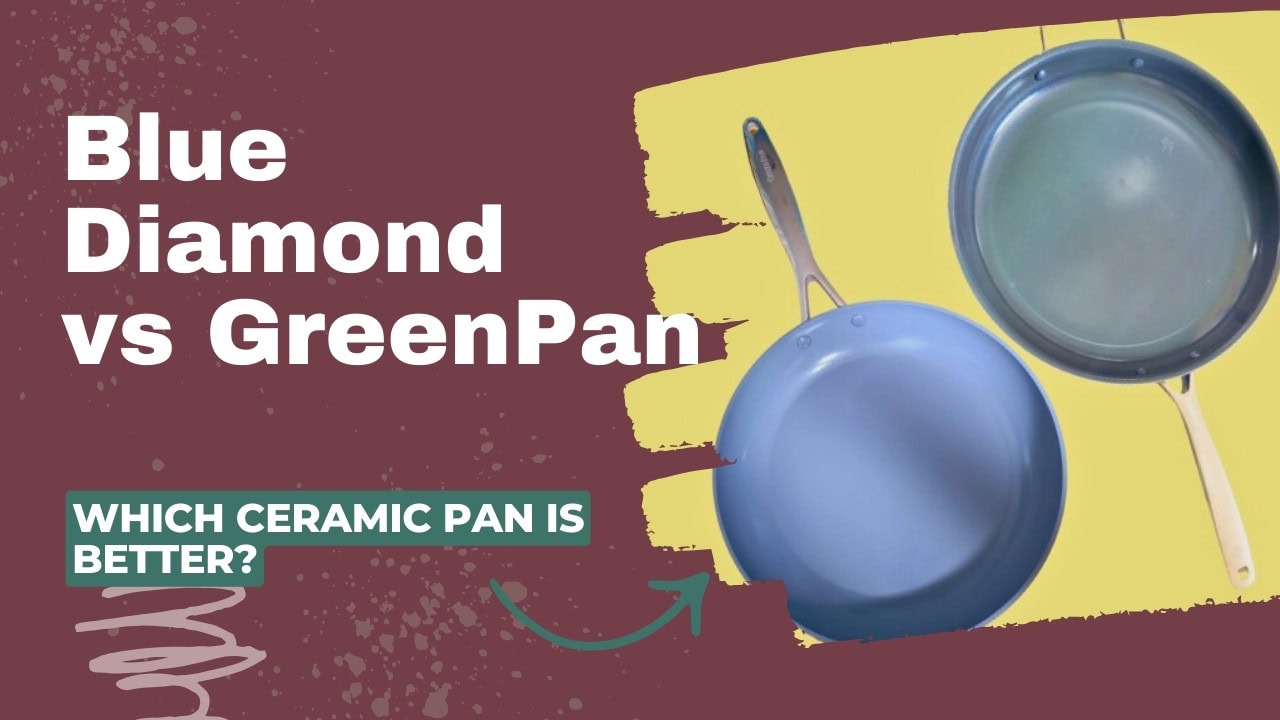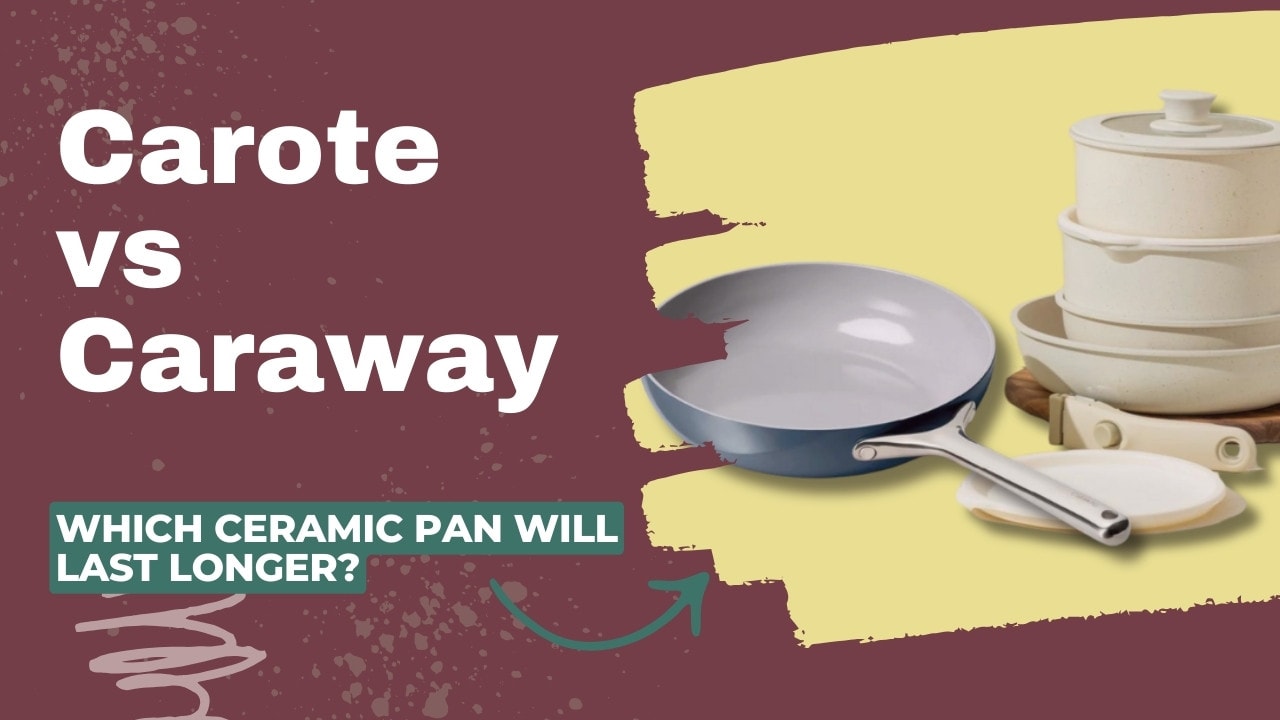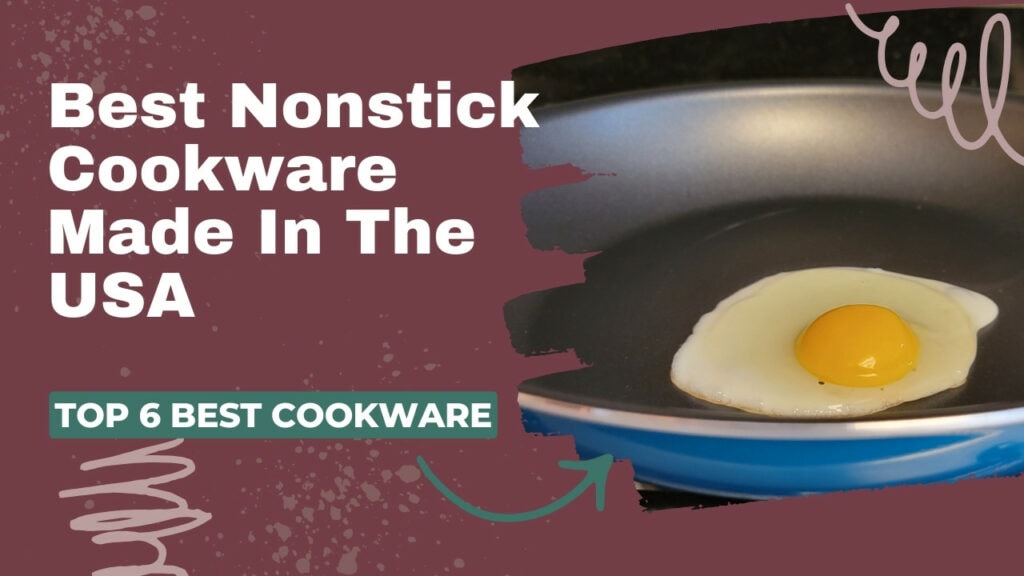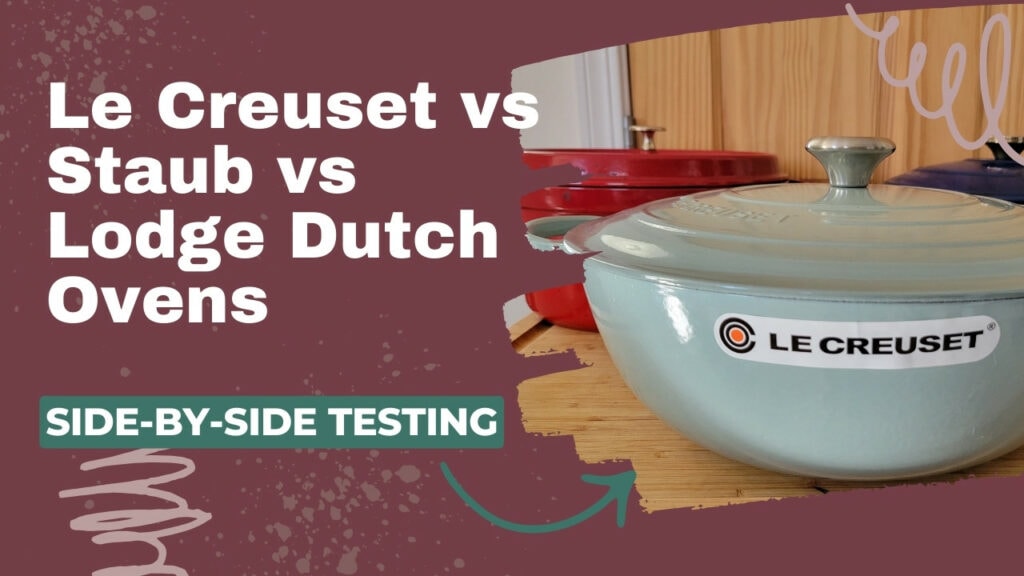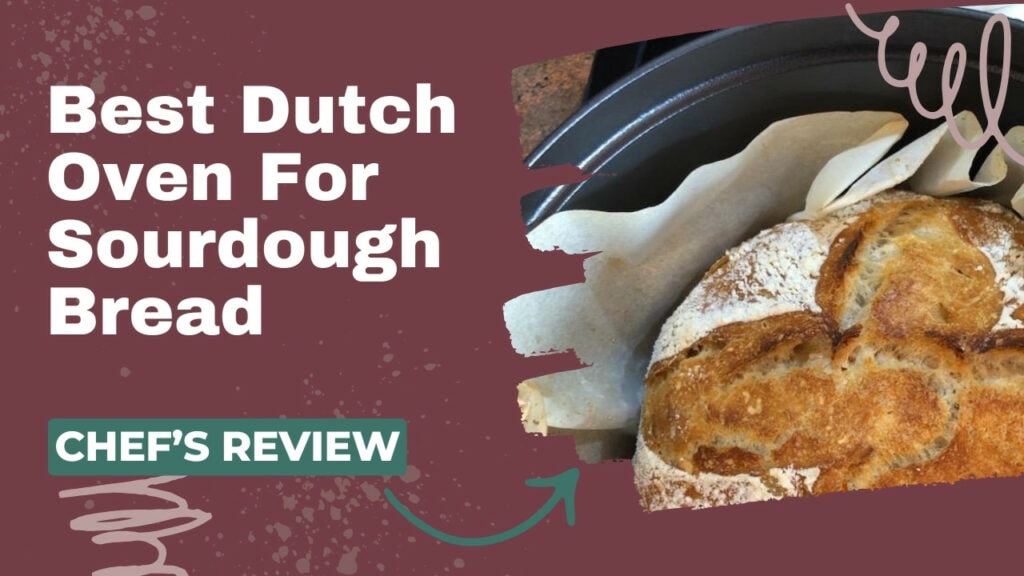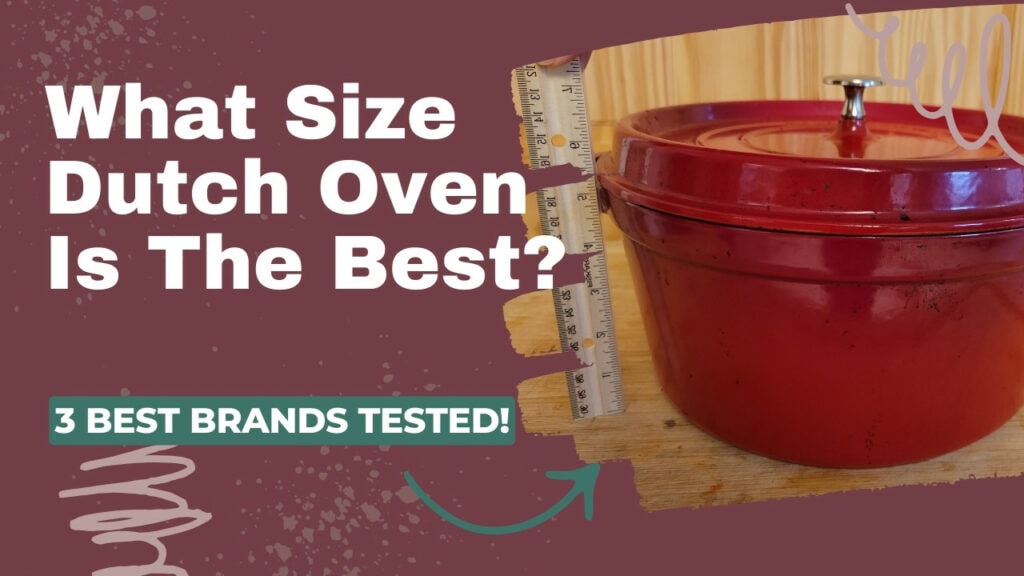The GreenPan Pro and the GreenLife Soft Grip aluminum pans are made by the same company and use the same ceramic coating – at least as a base. But these pans have different strengths and prices, targeting different markets.
I found the GreenPan Valencia Pro to be more versatile, and worth investing in for my everyday cooking needs. The GreenLife pan is cheap and won’t hold up to intense use – but it would be my go-to if I only wanted a pan for cooking eggs!
Are GreenPan and GreenLife the Same?
As you research GreenPan vs GreenLife pans, you’ll quickly discover that they are made by The Cookware Company, the original manufacturer of ceramic (sol-gel) nonstick coatings. Both brands offer several collections, all with some variation of the brand’s patented “Thermolon” ceramic coating.
Here are some key differences between the brands:
For this product review, we tested the GreenLife SoftGrip pan and compared it to a higher-end GreenPan, the hard anodized Valencia Pro.
GreenPan vs. GreenLife Side-by-Side Comparison
GreenPan Valencia Pro
Our rating:
75/100
Size:
11” Frying Pan
Length:
20”
Cooking Surface:
9”
Weight:
2.24 pounds
Oven-Safe:
600°F (315°C)
Coating:
Thermolon ceramic with diamond dust
Country of Origin:
China
GreenLife Soft Grip
Our rating:
64/100
Size:
12” Frying Pan
Length:
19”
Cooking Surface:
9.5”
Weight:
2.27 pounds
Oven-Safe:
350°F (176°C)
Coating:
Thermolon
ceramic
Country of Origin:
China
The Winner: GreenPan Valencia Pro 11” Frying Pan
Pros
Cons
The Runner Up: GreenLife Soft Grips 11” Frying Pan
Pros
Cons
Why Is The GreenPan Valencia Pro the Winner?
I love to cook, but I don’t want to empty my bank account to fill my kitchen with dozens of pots and pans. I prefer to have a few workhorse pieces that can do everything. While the GreenLife pan was the most budget-friendly, I really loved GreenPan’s versatility. Not only can the GreenPan be used on any stovetop, but it is oven-safe to 600°F (315°C). I also loved the heavier, sturdier feel of the GreenPan over the lighter GreenLife pan.
Cooking Performance
The GreenPan scored major points from me for being broiler and oven-safe to 600°F (315°C). The GreenLife pan is only oven-safe to 350°F (176°C) because of its Bakelite plastic handle.
In my test kitchen, I boil water, flip pancakes, cook eggs, and sear protein on every pan that I test.
The GreenLife Soft Grip took longer to boil water and had more hot/cold spots than the GreenPan Valencia Pro. Cooking pancakes and chicken breast on the GreenLife pan also revealed uneven heating that wasn’t a problem with the thicker, sturdier GreenPan.
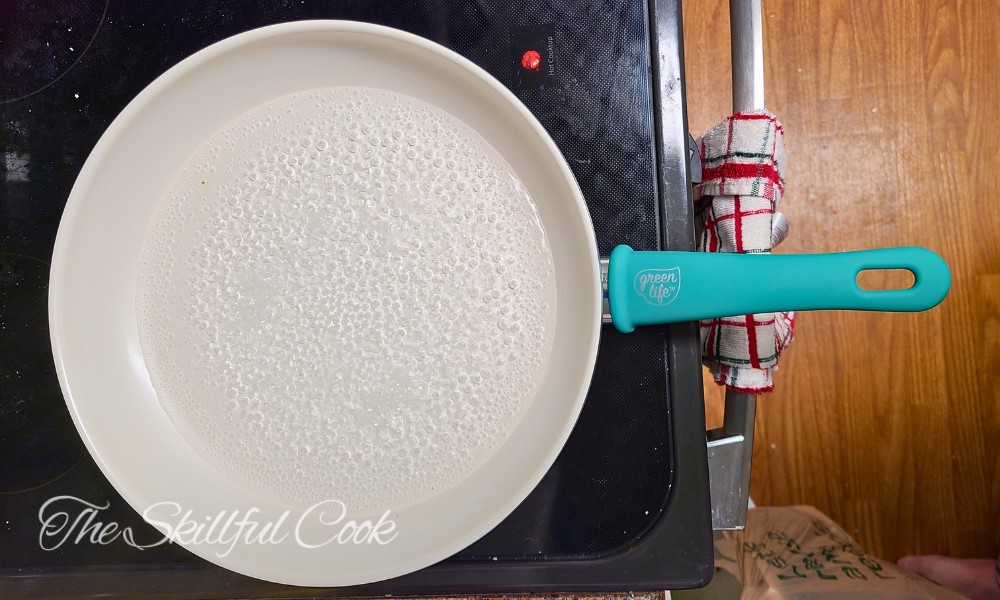
However, the GreenLife pan did a better job cooking eggs with no oil. It also released the pancakes and chicken very well with little to no oil. When using a small amount of butter, both pans did a good job of cooking eggs that didn’t stick. But the textured surface of GreenPan made it a bit less nonstick, in my experience – even if it will hold up longer.
Ultimately, I believe the GreenLife pan is better for eggs or delicate foods, or if you want to cook without oil. You must use the GreenLife pan very gently, though, on low heat, or the coating will wear out quickly!!
The GreenPan is a better all-around cooking pan, allowing you to take food from the burner to the oven in one pan.
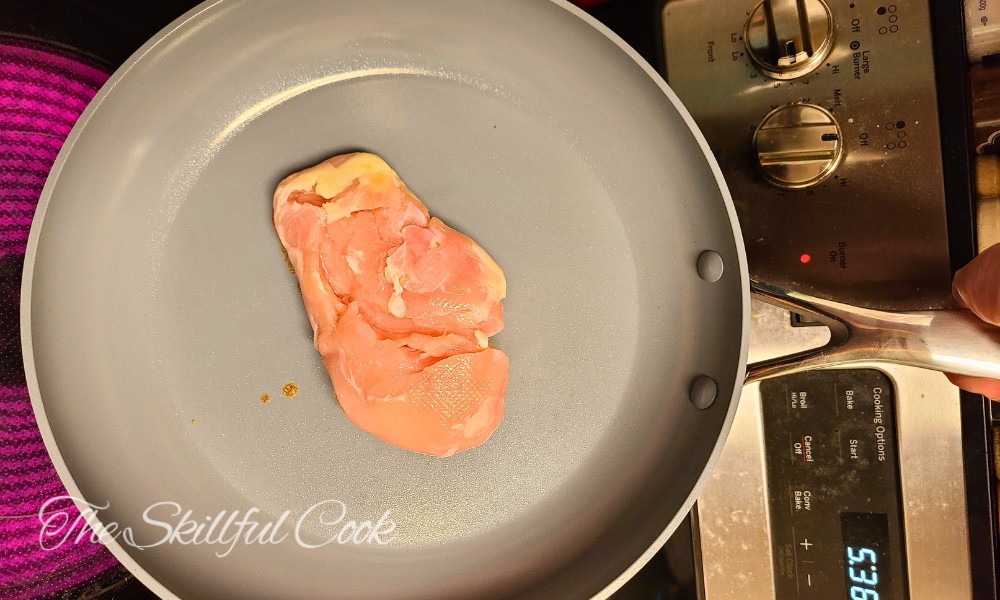
Build Quality
GreenPan takes the Build Quality category.
While both pans sit flat on the stovetop, the GreenPan Valencia Pro was the sturdier pan and less likely to tip over or slide due to an accidental bump. This is important as I have small children who like to help cook! Its heavy-duty textured base will resist warping over time.
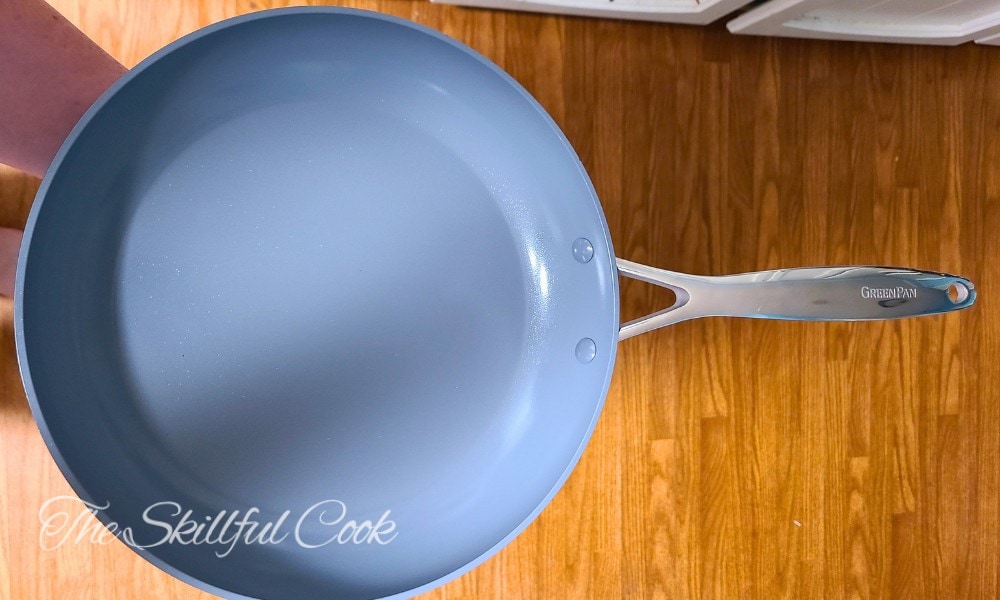
The biggest “pro” for me with the GreenLife Soft Grip pan was that it does not have rivets on the interior of the pan. Rivets catch gunk and oil and make it harder to clean.
Design and Comfort
GreenLife Soft Grip is a beautiful pan, with multiple lovely colors to choose from. GreenPan isn’t quite as beautiful on the exterior, but I happen to find the gray interior sleek and attractive. It has the added bonus of helping to hide staining!
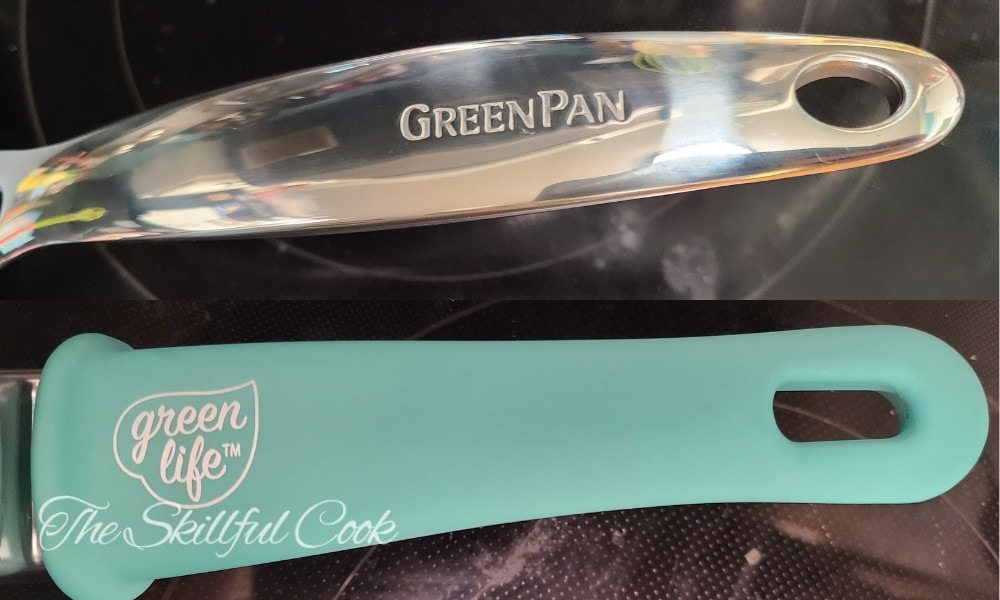
GreenLife Soft Grip has a Bakelite plastic handle. It’s not life-changingly soft or comfortable, but neither is the tried-and-true stainless steel handle on the Valencia Pro. The GreenLife handle remained cooler to the touch on my electric stove, but it would probably heat up over a gas range.
I wish both of these pans had a helper handle. They are a similar length and weight and can be a bit unwieldy, especially when full.
Versatility
Versatility is another category where the GreenPan Valencia Pro shines.
GreenPan Valencia Pro:
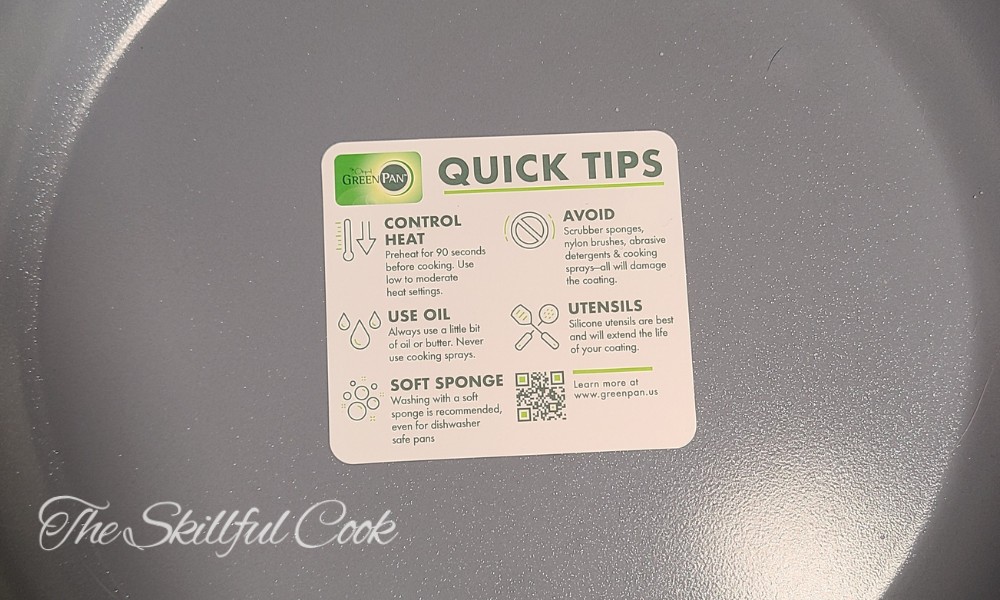
GreenLife Soft Grip:
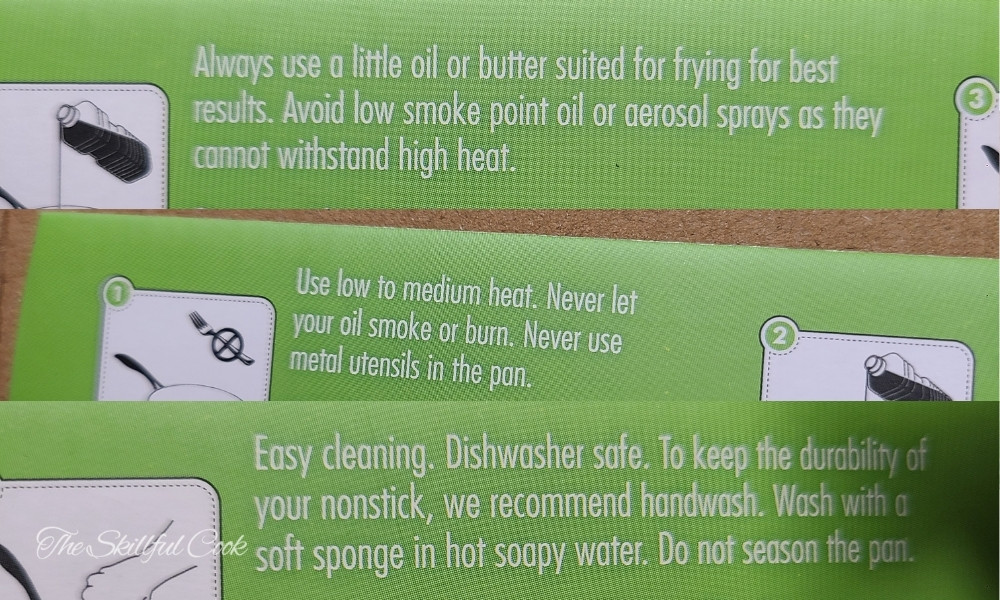
The GreenLife Soft Grip 12” frying pan only has a cooking surface of 9.5”. The smaller 11” GreenPan Valencia Pro has a cooking surface of 9”. To be honest, I felt a little cheated by the GreenLife pan’s cooking surface size.
Ease of Use and Maintenance
Both pans cleaned up easily. GreenLife’s lack of rivets made the pan just a little easier to clean, which gives it the edge in this category.
Overall, both pans were as close to a joy to clean as you can get when washing dishes.
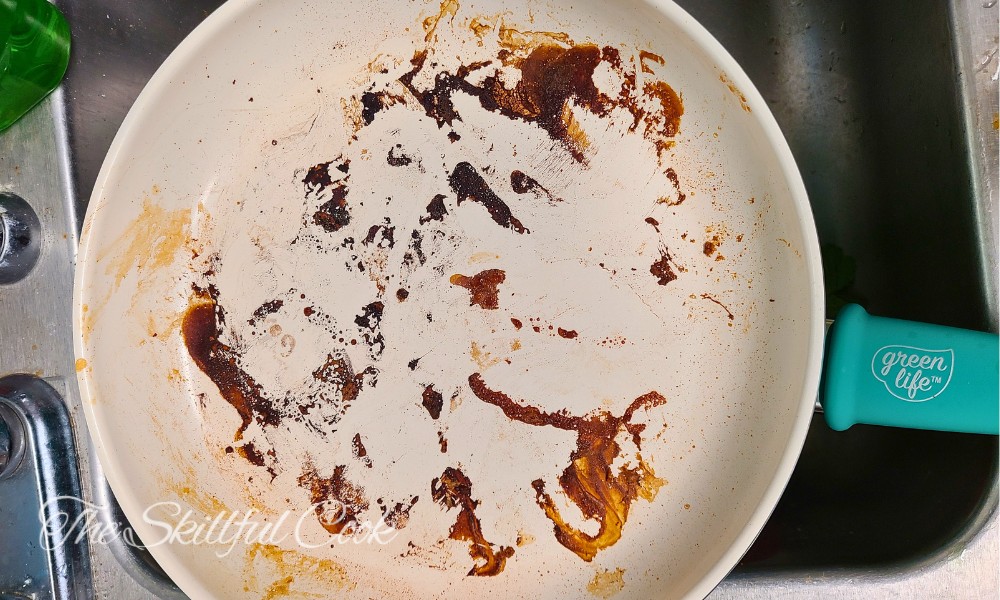
Remember that ceramic pans need to be handled carefully. Let the pans cool before you wash them. Avoid using metal utensils, even if the pan’s marketing claims you can use them (like GreenPan). Metal utensils and using the dishwasher will cause the ceramic coating to chip and deteriorate more quickly.
Neither of these ceramic fry pans needs to be seasoned like cast iron skillets. Both recommend avoiding spray oils, as they can cause baked-on gunk that is difficult to clean off. Low smoke point oils, even if not sprays, can also cause polymerized oil buildup that will reduce the nonstick effectiveness of these pans.
Longevity and Warranty
Ceramic pans are not generational cookware. At best you’re going to get a few years out of your ceramic pan.
My sister-in-law got 2 years out of her GreenPan before she purchased another. I don’t expect GreenLife to outperform the more expensive GreenPan based on the build quality.
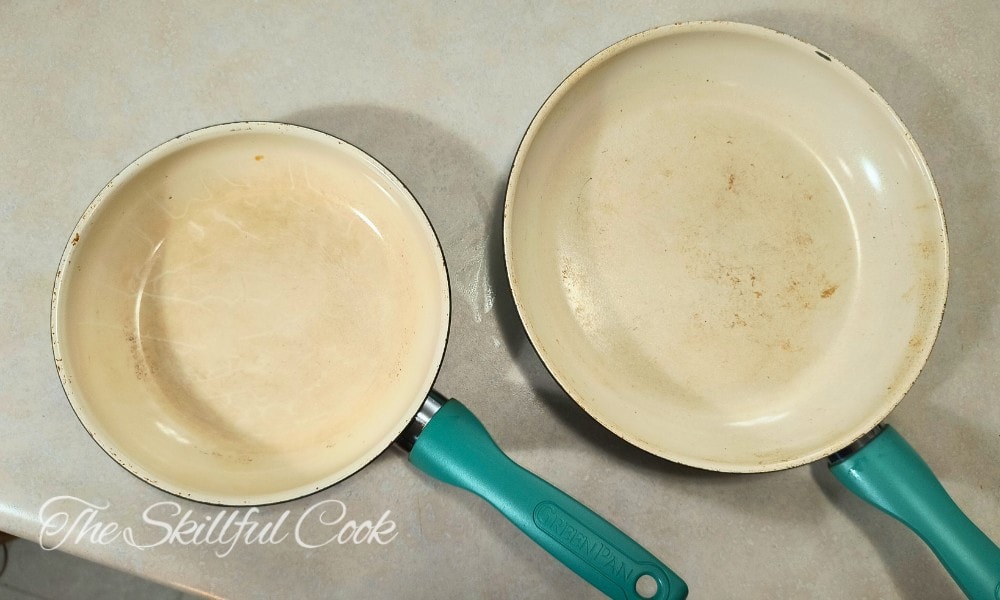
The GreenPan Valencia Pro has a hard anodized pan body with a stainless steel handle. Hard anodized aluminum is less likely to warp than regular aluminum, and may offer some protection to the coating. The GreenPan Valencia Pro has diamond dust infused into the coating, supposedly making it stronger. Does it really work or is it just a gimmick? Read our review of the Blue Diamond pan with the same coating for an answer.
Hint: the level of care that you treat the pan with affects its longevity more than the exact coating composition.
GreenLife and GreenPan both offer a 2-year limited warranty that is only useful in the case of manufacturer defects. It’s worth trying to get your pan replaced – but be prepared to have your request denied. It is up to the company (remember, they are both made by The Cookware Company) to decide if a damaged pan falls under their warranty.
Price and Availability
Both pans are widely available at mass merchandisers, as well as on Amazon. GreenLife Soft Grip and GreenPan Valencia Pro are available in sets and open stock.
GreenPan’s Valencia Pro is one of the higher-end ceramic pans, comparable in quality and price to Caraway. You get what you pay for, so don’t be surprised to see GreenLife coming in at a third of the price of GreenPan.
Health and Safety Considerations
GreenLife Soft Grip uses a bakelite handle. When the handle overheats, it can release noxious fumes. I didn’t have a problem with this on my electric range, but gas stove users have reported that the handle burns even on low heat. GreenPan has a stainless steel handle, so it’s not going to release fumes.
Both pans state the food surface of the pans is California Prop 65 compliant, but lists chemicals of potential concern that “may be present in substrate layers” (see GreenLife’s statement here).
Both pans state the food surface of the pans is California Prop 65 compliant, but lists chemicals of potential concern that “may be present in substrate layers” (see GreenLife’s statement here).
These layers should not come in contact with your food unless the coating is badly chipped or scratched. It is important to replace your pan if you see evidence of chipping or scratching.
Ceramic-coated pans are made without plastics like Teflon, and without “forever chemicals,” aka PFAS. They are considered “most likely safe” by most experts. That said, this technology is so new that we don’t know everything about its long term effects.
Some experts are concerned that titanium and quartz nanoparticles from scratched ceramic coatings “can penetrate lung tissue more readily than larger particles.” Check out our guide to ceramic cookware to learn more.
Company and Environmental Impact
These pans are both made by The Cookware Company and manufactured in China. The company has been accused of “greenwashing” by several sources. While the company makes many claims, there is very little third-party verification.
GreenPan has a recycling program (I could not find one for GreenLife). Surprisingly, the program charges $20 to cover shipping and handling. I imagine many consumers will balk at the cost and effort of recycling the pan. These pans are destined for the landfill every few years, as they are sadly the “fast fashion” of the cookware world.
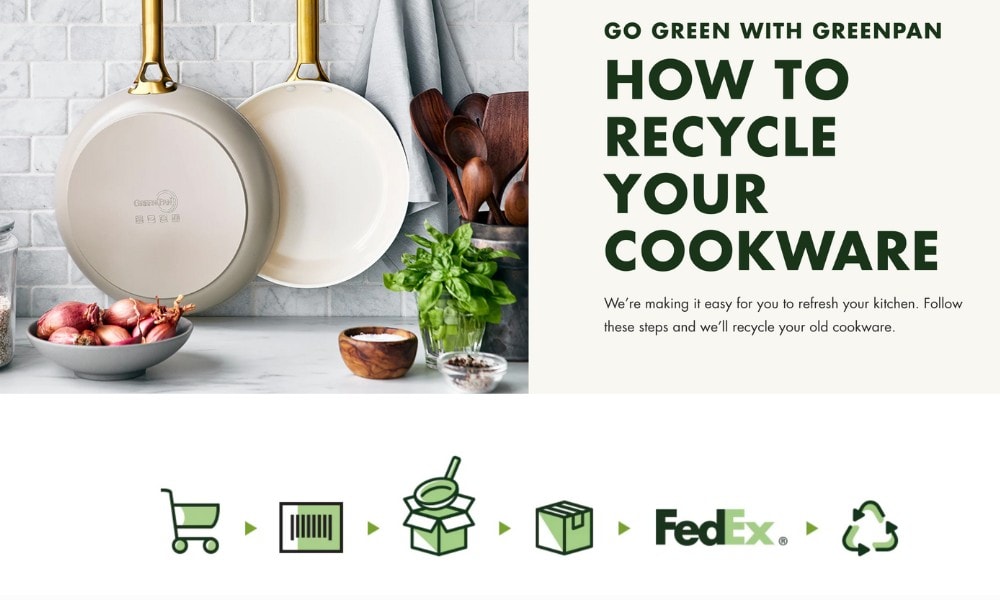
Conclusion
While these two pans are made by the same company, they have their differences. I will choose the GreenPan Valencia Pro pan for its versatility, durability, and better cooking performance, even if that means I pay more for the pan than the cheaper Greenlife pan.
The GreenLife pan would be a nice, affordable option for young adults moving into their first apartment, or going off to college. If you’re looking for a pan just to make eggs for breakfast every now and again, I recommend you get the GreenLife Soft Grip instead of spending more money on the GreenPan Valencia Pro.
Frequently Asked Questions
How Long Will My Ceramic Pan Last?
Ceramic pans can last just a few months to several years. As a general rule, cheaper pans will wear out more quickly than more expensive ceramic pans. GreenPan Valencia Pro is of comparable quality to Caraway and should outlast GreenLife. But it all depends on how gently you use and clean these pans.
What Is The Lawsuit Against GreenPan?
A 2019 class-action lawsuit was filed against The Cookware Company, alleging the GreenPans were advertised as toxin-free, but contain known toxic compounds in their Thermolon coating. The lawsuit was dismissed with no “admission of wrongdoing” by GreenPan and no finding of liability.

